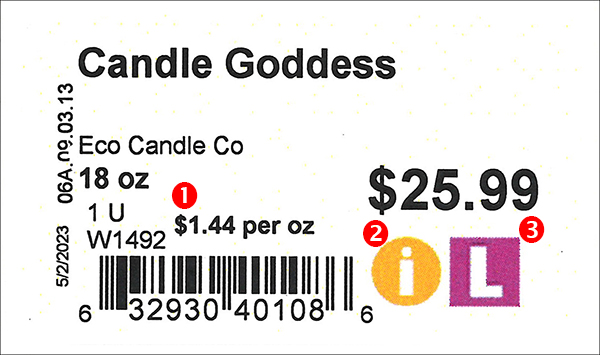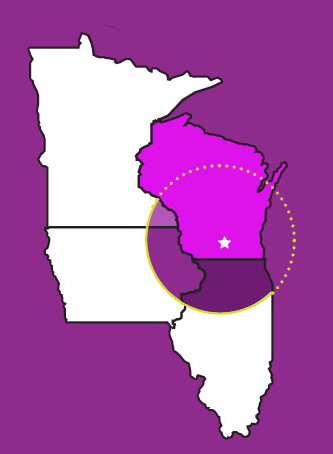Some of the information on our price tags is obvious—the vendor name, the product name, and the price, for example. Some of the information, the the barcode, is unneeded by anyone shopping. But there are three things you may be interested in learning more about.

- Unit pricing. This is particularly helpful when comparing two products—for example, a family size bag of chips and a regular size bag. By comparing the price per one unit (ounce, serving, etc.) for the two products, you can determine how much, if any, you could save.
- Inclusive Trade (where applicable; learn more here). This program highlights products from companies owned, controlled, and operated by individuals from underrepresented groups. A vendor will be considered an Inclusive Trade vendor if it is at least 51% owned, controlled, and operated by a person or persons who belong to one or more of the following groups:
- Women
- Black, Indigenous, and/or Persons of Color
- LGBTQIA+ people
- Veterans
- Persons with disabilities
- Local (where applicable). Willy Street Co-op defines “local” as within 150 miles of the State Capitol building or anywhere in Wisconsin (see map below). If you are interested in finding out more about just how local a product is—does it use local ingredients or is it just made locally?—check out this page.
